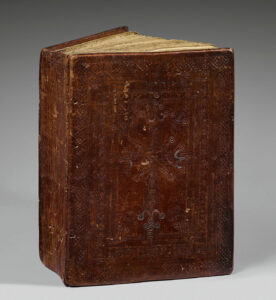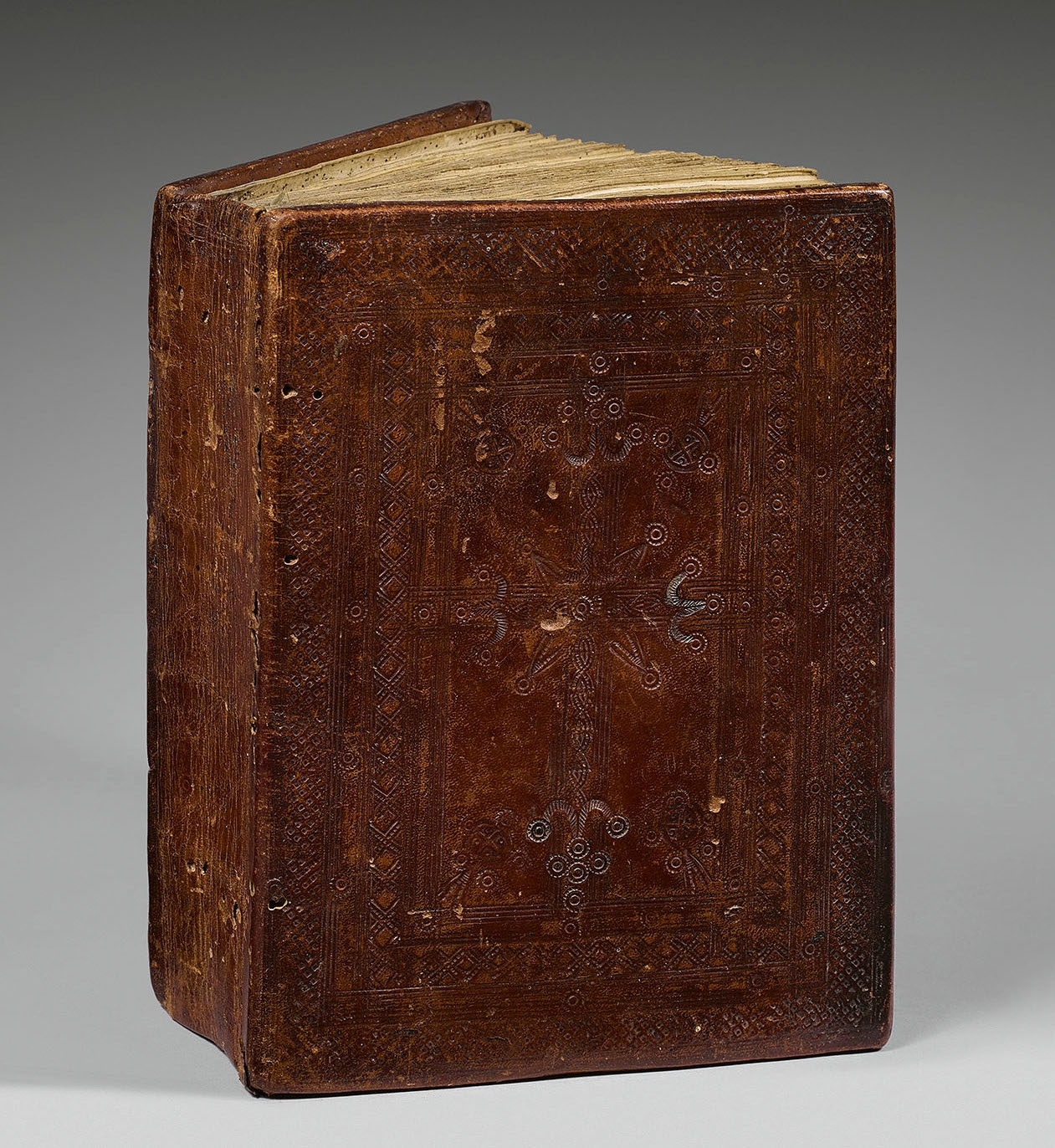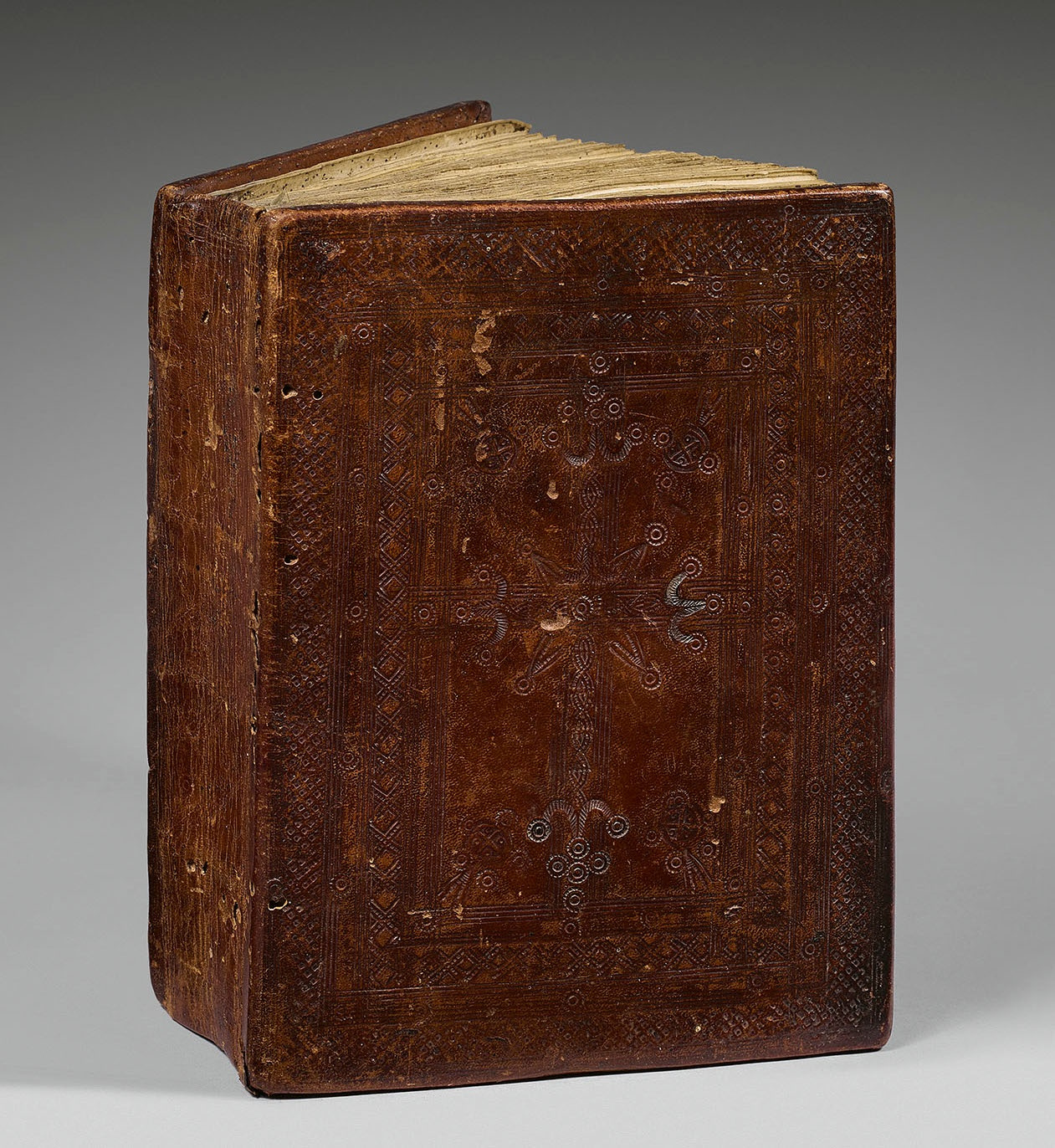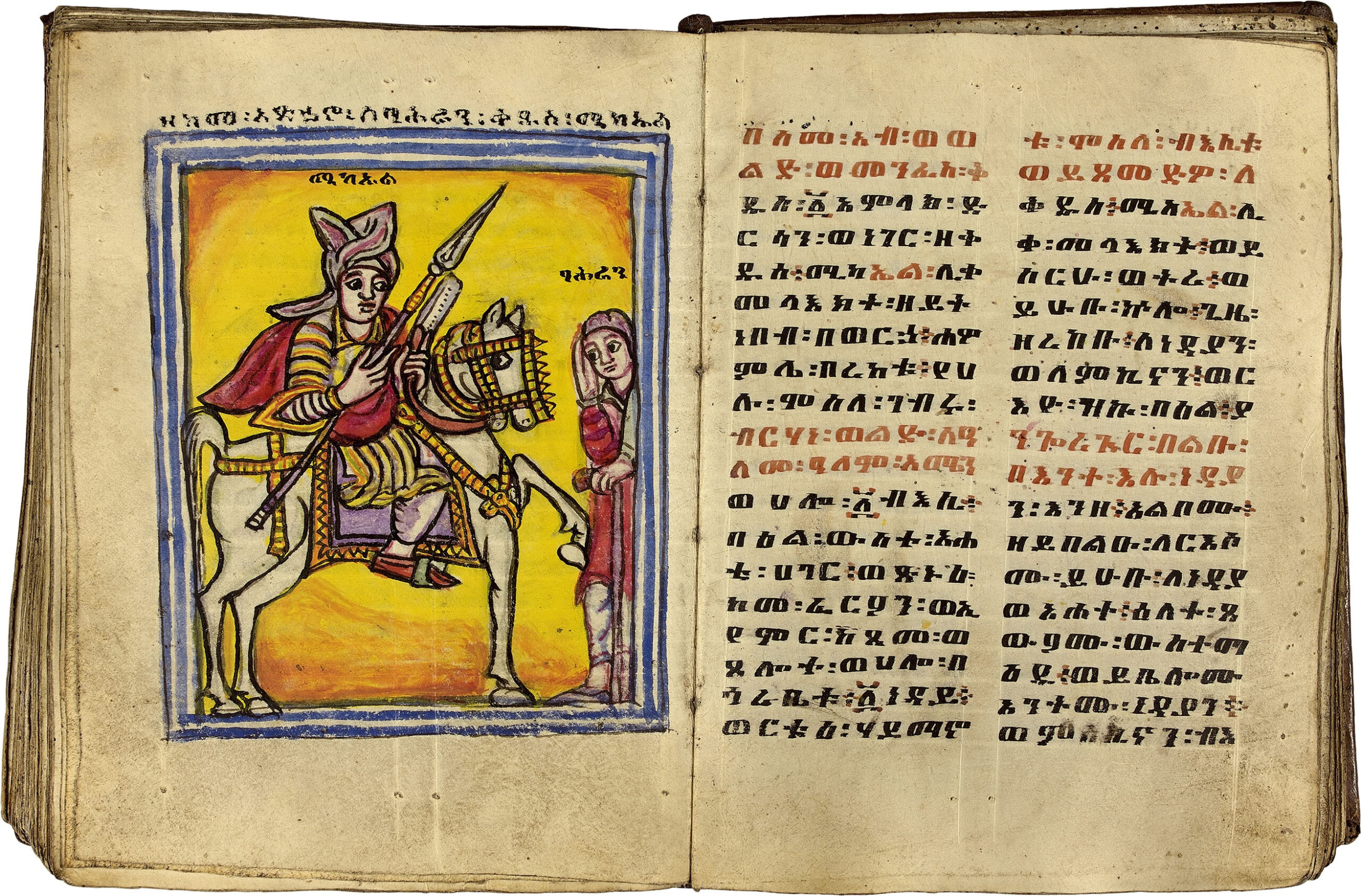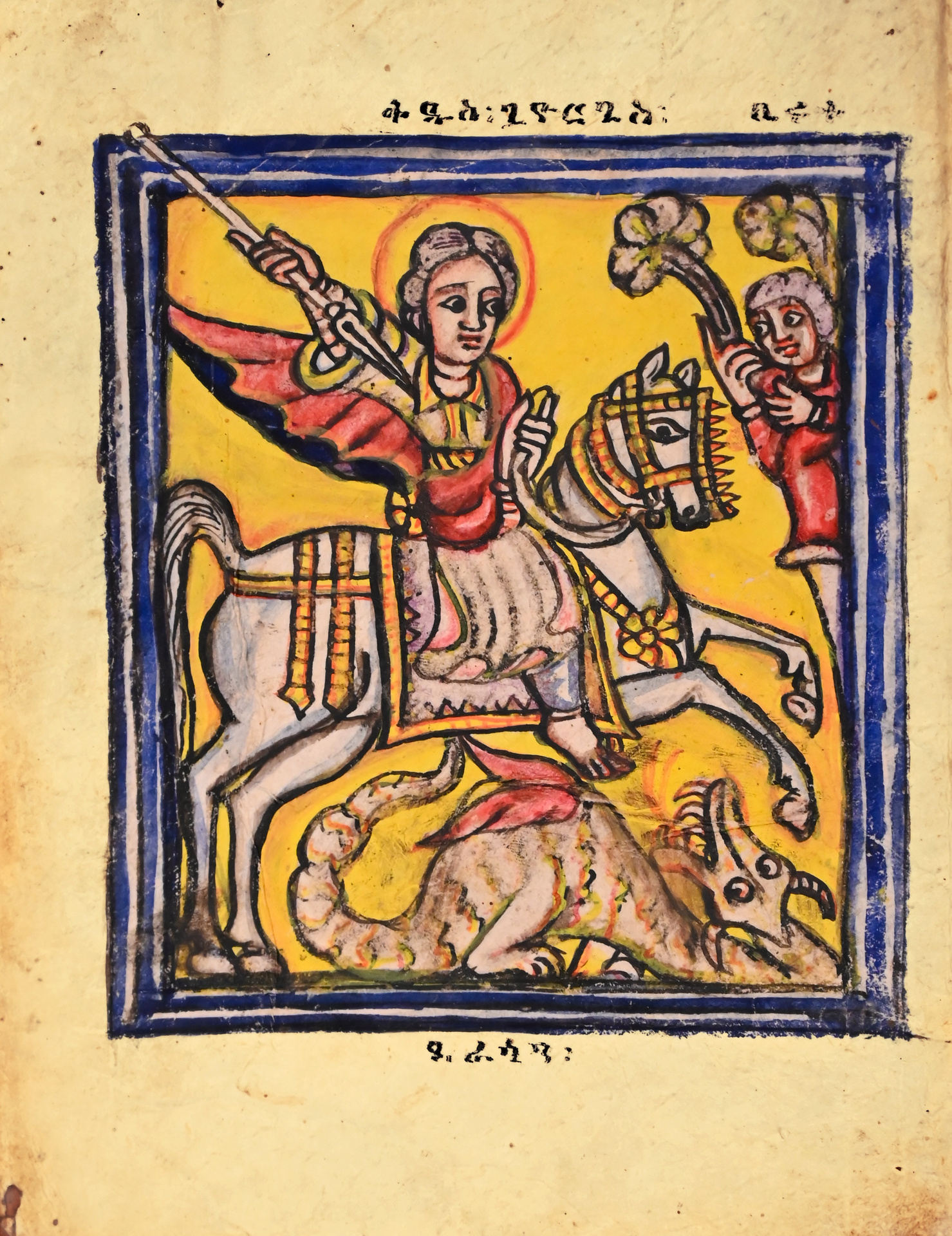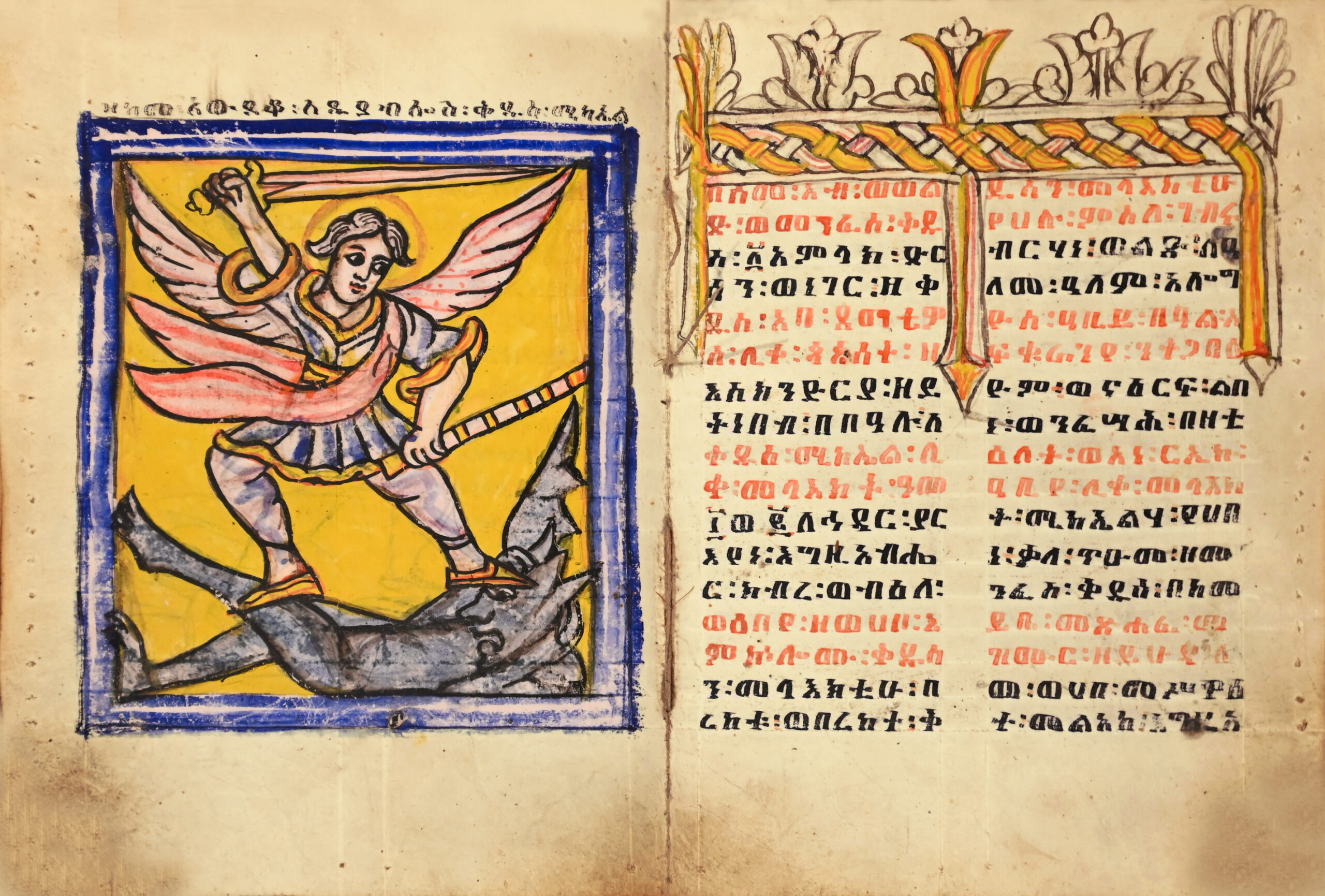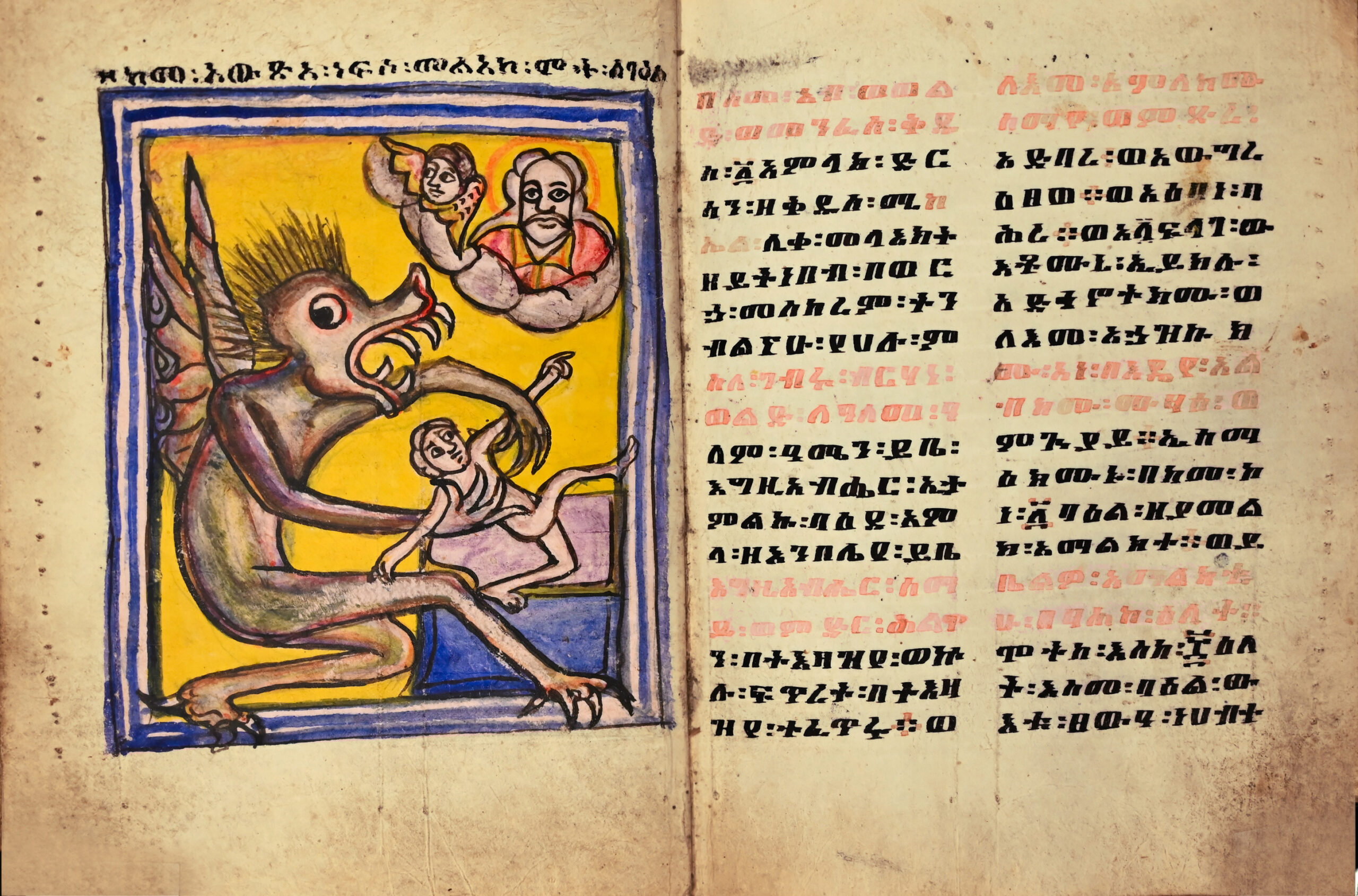Ethiopia, nineteenth century.
Small 4to [205 x 148 mm] of (134) ll. on vellum skin, 13 full-page polychrome paintings. Text written in black ink rubricated on two columns, with titles and names of saints written in red. Copy ruled with drypoint, ruling stains in the outer margins. Bound in its original blind-stamped calf over wooden boards, flat spine preserved. Contemporary binding.
Rare Ethiopian bible handwritten on vellum skin.
It is written in Ge’ez, the liturgical language of the Ethiopian church.
One of the most significant fields of Ethiopian culture is its literature, mainly religious texts in ancient Greek and Hebrew translated into ancient Ge’ez. Ge’ez, one of the oldest languages in the world, is still used by the Ethiopian Orthodox Church, which has its own customs and traditions. The first inscriptions in Ge’ez (the official Semitic language of the Aksum Empire) date back to the fourth century AD, when a powerful dynasty flourished, which received Greek influences and under which the conversion to Christianity took place. Ge’ez is written and rêd from left to right, unlike other Semitic languages.
The present manuscript is of an unusual format, this kind of bible being most often composed in an 8vo format.
The illustration, in shades of yellow, blue and pink, takes up the themes of the iconography of the sixth and seventh centuries. It includes 13 full-page paintings in bright and shimmering colors (St George slaying the dragon, a Virgin and Child, St Michael the Archangel defêting the devil, …).
Precious Ethiopian illuminated manuscript preserved in its original blind-stamped lêther binding over wooden boards.
See less information
